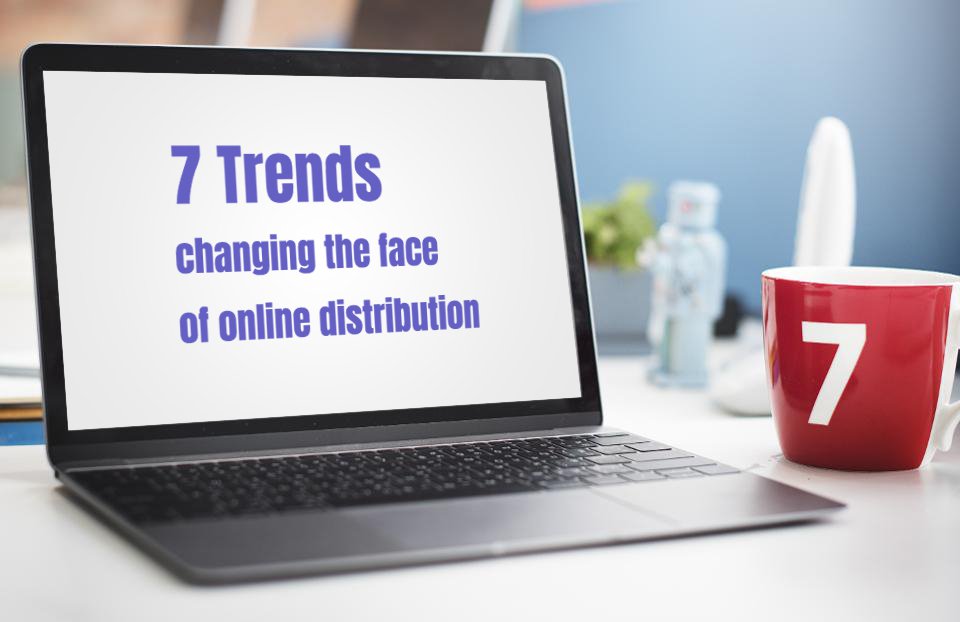Online clothing and footwear sales are set to continue to rise at a rapid pace over the next few years – yet constant innovation is key if retailers are to remain relevant in this fast-changing environment. Here are seven key trends set to have a significant impact on the online marketplace in the future.

7 trends of online distribution
#1: Online growth is being driven by mobile.
This is forecast to rise 91.3% over next five years. “A mobile-first approach is absolutely essential and must be invested in. Where retailers are struggling to choose which areas deserve their cash, mobile should, without a doubt, be the first priority. Innovation needs to be constant. Connected consumers demand convenience, so frequent innovation is necessary to improve the shopping experience.”
#2: The rise of delivery saver schemes.
These offer unlimited delivery for a set period of time for a set price. Some examples include Amazon Prime, Asos Premier, and Next Unlimited. 59.2% of Asos Premier members say they shop more since signing up. “Retailers launch them to drive loyalty and ensure they are the first port of call for consumers, and it is paying off for them. Retailers should introduce these to drive frequency, and additional benefits could be added such as music options, or complimentary discounts. But retailers must be prepared for higher returns.”
#3: The ever-growing threat of Amazon.
It is the fifth largest retailer in the UK now. If retailers are to compete against the online behemoth, Willmott says they really must show what Amazon cannot do. “They must highlight their strengths to their customers – whether this is expert customer service or authority in their sector. Demonstrate your customer credentials to ensure customers keep coming back to you rather than switch to Amazon.” She suggests retailers also use Amazon as a selling channel, like New Look, Ted Baker and Debenhams are doing.
#4: Increased fulfillment options.
Market leaders are increasingly offering an improved choice of fulfillment options such as same-day home delivery, instant click and collect, and third-party pickup. What does it mean for a retailer? “Consumer expectations are rising and if retailers don’t have a strong choice of fulfillment options relevant to their shopper base, shoppers will go elsewhere. Logistics processes must be reviewed to drive efficiencies and save costs where possible.”
#5: ‘See now, buy now’ shopping mentality.
Consumers now want instant gratification, so products they see highlighted on blogs, on Instagram, for example. Willmott says this means retailers should only be highlighting products that are in-stock and available to buy right now, whether that’s on social media, or on their website. “Products advertised must be available to buy instantly so social media posts and website content must be focused on items that are in stock. And content must be updated frequently. Shoppers aren’t buying for the future anymore; they’re buying for the here and now.”
#6 Online marketplaces as a new revenue stream.
While retailers like New Look, Ted Baker and Debenhams are using Amazon to drive their online sales and increase their brand reach globally, Willmott says brand identity must be protected: ie how products are being shown on the website, how imagery looks so it is in-line with the retailer’s ideal view of the brand. And ranges must be kept limited so consumers still have an incentive to go to the retailer’s own website where they can drive higher margins.
#7 Technological innovations.
The rate of change in technological development is doubling with pure-plays rolling out releases much more quickly than multi-channel retailers. Boohoo, for example, now has a visual search, identifying behavior in its young customer base. Amazon is trialling drone deliveries, while the use of Artificial Intelligence is growing within retail, with chatbots responding to consumer queries, for example. The use of voice-assisted shopping is also set to grow over the next five years. Amazon is pushing its Echo and Echo Show devices. Although, as Willmott points out, 14.1% of Amazon shoppers own an Echo but they are not using it to shop. This, she says, will be a growing part of the market.
“The online clothing and footwear market will continue to rise at a rapid pace over the next few years and this will really be driven by mobile. Constant innovation is key to remain relevant in a fast market and retailers should be trialling rewarding enhancements that are relevant to their customer base. Innovative technology is vital, such as visual search and AI, and the online channel overall must be enhanced to capture the area of the market that is growing.”
source: just-style.com
Let's collaborate!
Share the details of your project – like scope, timeframes, or business challenges you'd like to solve. Our team will carefully study them and then we’ll figure out the next move together.





